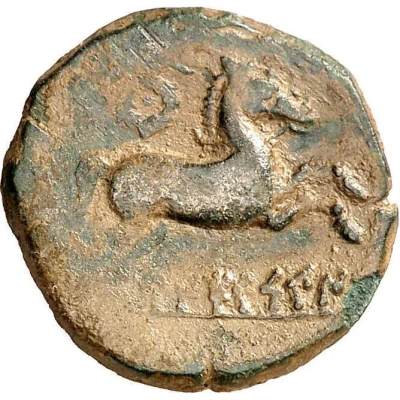


© Aureo & Calicó S.L., subastas numismáticas
Sextans horse with wreath 195 BC - 170 BC
| Bronze | 4 g | 18 mm |
| Issuer | Untikesken gens (Indigetes people) |
|---|---|
| Type | Standard circulation coin |
| Years | 195 BC - 170 BC |
| Value | 1 Sextans (⅙) |
| Currency | As (Roman pound system, 2nd century BC) |
| Composition | Bronze |
| Weight | 4 g |
| Diameter | 18 mm |
| Shape | Round (irregular) |
| Technique | Hammered |
| Orientation | Variable alignment ↺ |
| Demonetized | Yes |
| Updated | 2024-10-10 |
| Numista | N#165987 |
|---|---|
| Rarity index | 94% |
Reverse
Horse facing right. Wreath above. Legend below, above line.
Script: Iberian (Levantine)
Lettering: untikesken
Comment
Legend in Northeastern Iberian scriptuntikesken
s, likely face value
Interesting fact
The Sextans coin featuring a horse with a wreath, issued by the Untikesken gens (Indigetes people) during 195 BC - 170 BC, is an interesting artifact from ancient times. One fascinating fact about this coin is that it was made of bronze, a durable metal that was widely used for currency in ancient civilizations. The use of bronze for coins like the Sextans allowed for the creation of a standardized currency that could be easily produced and traded throughout the region. Additionally, the fact that the coin weighs 4 grams suggests that it was designed to be a practical and portable form of currency, making it easy for people to carry and use in their daily transactions.



